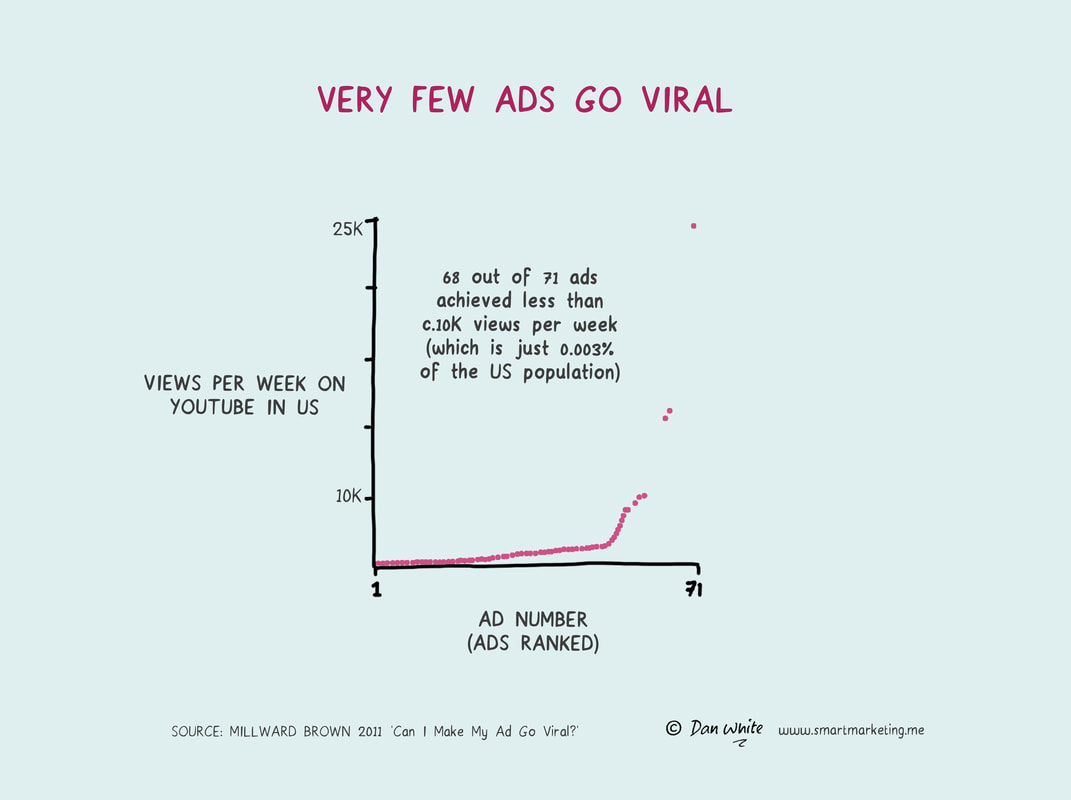|
What will and won't go viral is almost impossible for anyone to predict. For every success story, there are tens of failures. Relying on producing content that goes viral to move your brand forward is highly risky and, arguably, irresponsible. If accountability isn't an issue, a viral-centred approach could work but you'll need exceptional creativity, originality an understanding of the zeitgeist.... and a lot of luck. Here's a short video discussing the topic and this LinkedIn thread highlights the views of leading marketers. The original report by Millward Brown from 2011 can be found here. What to learn more? Try asking Virtual Dan White. |
- Home
- Books
-
Illustrations
- Marketing
- Brand Development
- Brand Experience
- Innovation
- Communications Strategy
- Media Characteristics
- Creative Content
- Pricing & Sales Promotion
- Measurement
- Data and Analysis
- Brand Review & Planning
- Brand Extension
- Mental Processes
- Business
- Business Story Telling
- Case Examples
- Wellbeing
- People Skills
- Life Hacks
- Articles
- Media
- Services
- Merchandise
- Contact

